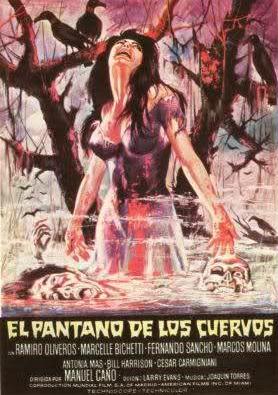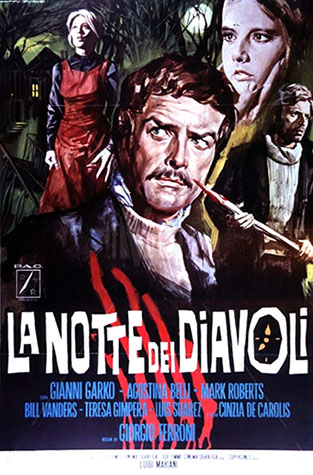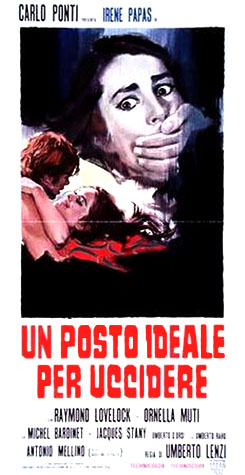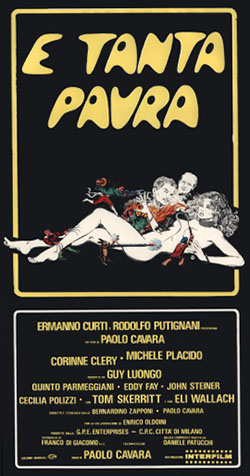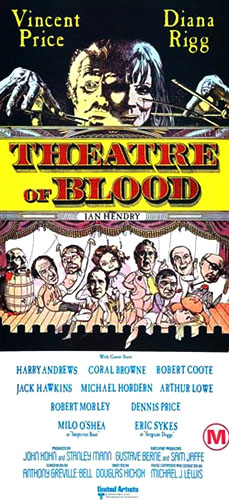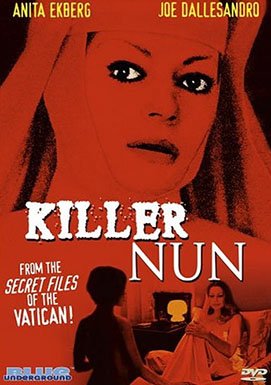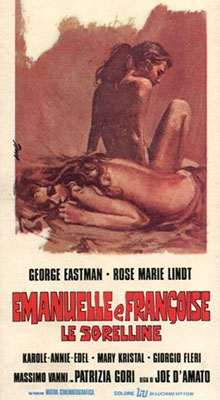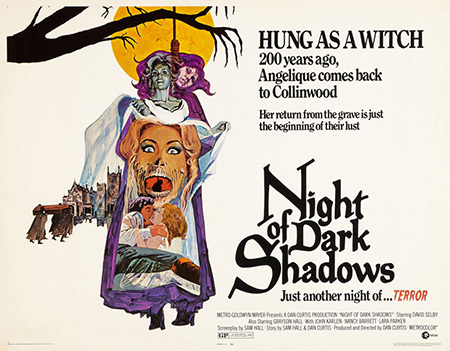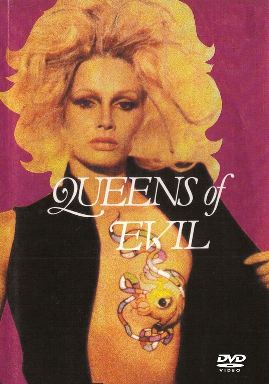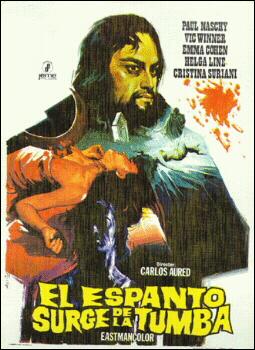
[This article contains a few spoilers.]
“You two will serve us during the day. And once the seven moons have gone by
and the rite is carried out, you will be our master Satan’s dish.”
Whenever life gets me down and I need to escape from reality, I turn to the king of Spanish horror, Jacinto Molina, better known to the world as Paul Naschy. This former weight lifter turned actor, writer, and director was one of the horror genre’s legendary figures. Best known for his always energetic portrayal of Waldemar Daninsky, a man suffering quite profoundly under the curse of the werewolf, Naschy first caught my attention when I picked up a copy of Werewolf Shadow from a sale bin somewhere. By then the hooks were in and I had to find more of his films. Little did I know how insanely prolific this barrel-chested badass was in horror filmdom.
Of Paul Naschy’s many, many horror outings, I always come back to Horror Rises from the Tomb. In it, he plays Alaric de Marnac, an evil cannibalistic nobleman (not a werewolf) put to death for his devotion to black magic. Alaric is not alone in his crimes and his mistress Mabille De Lancre (Helga Line) is executed along with him. Before they meet their fates, Alaric and his witchy woman curse Alaric’s brother (also played by Paul Naschy) and Andre Roland (Victor Alcazar) promising that their ancestors will suffer for their betrayal. Over 500 years later, Hugo de Marnac (Naschy again) and his friend Maurice Roland (Alcazar again) awaken the spirit of Alaric de Marnac in a seance. Woops. Andre and Hugo’s chicks get spooked so they all decide to visit the de Marnac ancestral home to prove that there are absolutely no supernatural things at work. Double woops.
Aside from nearly getting killed by some bandits and getting to witness some vicious backwoods justice firsthand, Hugo and company arrive safely at their destination. With the help of some suspicious villagers, Hugo begins digging up the land looking for some treasure but the knuckleheads find the still living and very fresh severed head of Alaric de Marnic which possesses anyone who meets its gaze. Meanwhile, Hugo rekindles his love for Elvira (Emma Cohen) and the two hook up while everyone is either dropping dead or vanishing around them.
Maurice becomes Alaric’s (non-love) slave and helps him return his severed head to his body and resurrect Mabille De Lancre. These two delightfully evil beings go right to work, ripping out the hearts of hapless villagers for sustenance. Hugo is shotgunned to death by Maurice but before he can do her in too, Elvira breaks the spell on the poor schmuck with a magical talisman. Now it is up to the survivors to bring Alaric and Mabille’s bloody rampage to an end. Maurice and Elvira steel themselves for a fight to the death (or undeath) against creatures with some pretty nifty magic powers like turning their victims into zombies and disappearing and reappearing at will. I wish you luck, you poor bastards.
The moment composer Carmelo A. Bernaola’s insane organ music comes screaming out of your TV’s speakers, you will know it is on. And by ‘it’, I mean ‘ass-kicking horror’. With its rampant nudity, gore, and straight-faced goofiness, Horror Rises from the Tomb is total immersion into the world of Eurohorror. I wish I could erase my memory of this one just so that I could rediscover it over and over again. While Paul Naschy can carry a film on his own, the scrumptious German cult movie queen Helga Line (The Vampires’ Night Orgy) is on hand to make sure that all the dudes in the audience are paying attention. And while there are several sexay womens populating this film, Helga’s only real competition comes from Emma Cohen. Don’t let that stage name fool you, Cohen comes from Spain and will lay you to waste with her enchanting good looks.
Even though director Carlos Aured’s film is 19 varieties of cheesy, it has one of my top 5 favorite supremely awesome seance sequences. As soon as the medium (played by Elsa Zabala) goes into her trance, the disembodied head of Alaric de Marnac materializes and begins to speak. Next thing you know a candelabra goes flying at Hugo’s head and it is freakin’ hilarious. There are other awkward moments, the best of which is when Maurice confronts Alaric with the disco talisman. These two grown men begin to jump from side to side as though they were in some obscure folk dance. Other moments of inexplicable goofiness happen and no one is winking at the camera. This is all delivered with the utmost seriousness and it is one of the many reasons why Horror Rises from the Tomb is a classic.
Once the evil starts in this purple and red nightmare of a film, it’s a seemingly unstoppable juggernaut that will fucking destroy the world one village at a time. In a couple of calm moments in the last half of the film, a sense of dread settles in and one wonders if the good guys might actually fail this time. I won’t say what happens but I promise that you will enjoy this film (unless you’re a complete dickhead!). Horror Rises from the Tomb is a macabre, chilling, and kinky flick. And yes, there will be many smoke machines and at least one (really impressive) zombie siege. Did I mention that Paul Naschy plays not one, not two, but three different characters in this one!? And that he wrote the screenplay?! Well, he does and he did. God bless you, Jacinto Molina.
